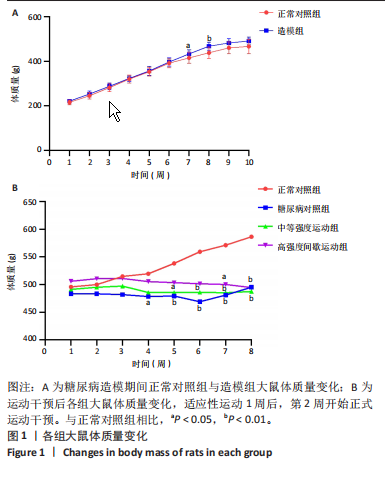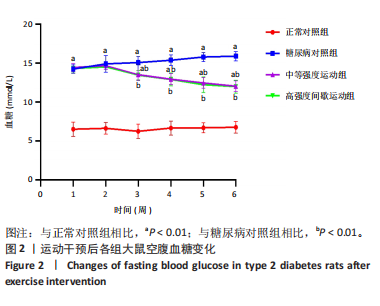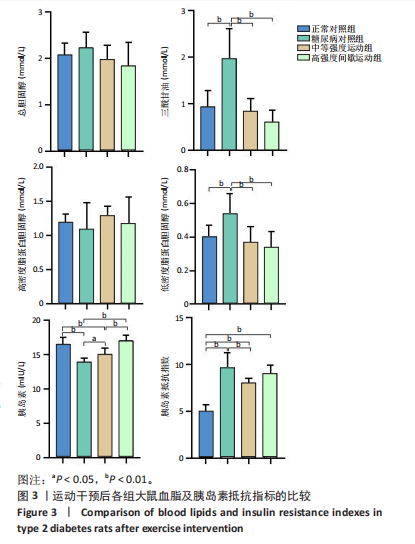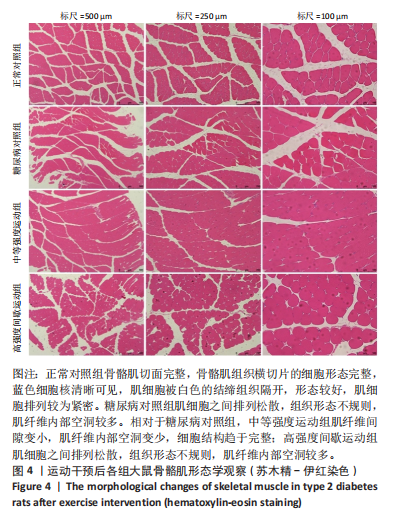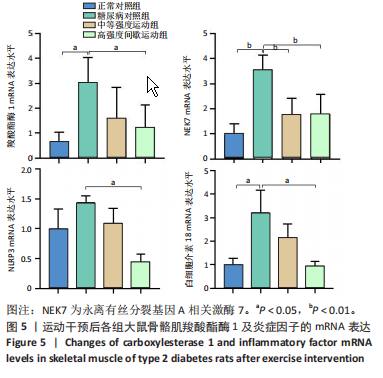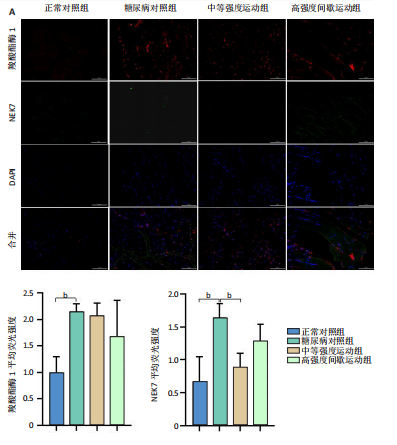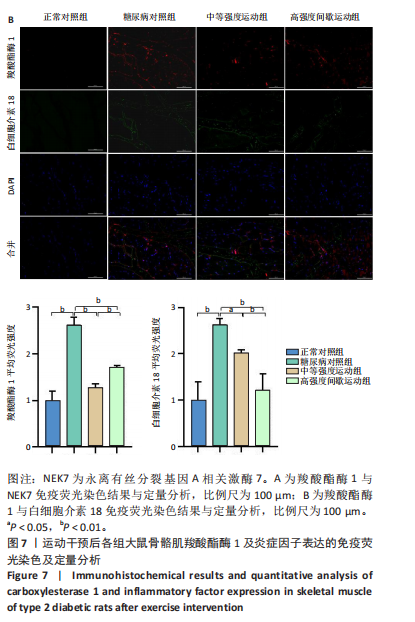[1] 中华医学会糖尿病学分会.中国2型糖尿病防治指南(2020年版) [J].中华糖尿病杂志,2021,13(4):315-409.
[2] GALICIA-GARCIA U, BENITO-VICENTE A, JEBARI S, et al. Pathophysiology of Type 2 Diabetes Mellitus. Int J Mol Sci. 2020;21(17):6275.
[3] FRIEDRICHSEN M, POULSEN P, WOJTASZEWSKI J, et al. Carboxylesterase 1 gene duplication and mRNA expression in adipose tissue are linked to obesity and metabolic function. PLoS One. 2013;8(2):e56861.
[4] JIN T, XU J, YIN L, et al. Hepatic Carboxylesterase 1 Is Induced by Glucose and Regulates Postprandial Glucose Levels. PLoS One. 2014; 9(10):e109663.
[5] DOMINGUEZ E, GALMOZZI A, CHANG JW, et al. Integrated phenotypic and activity-based profiling links Ces3 to obesity and diabetes. Nat Chem Biol. 2014;10 (2):113-121.
[6] JERNAS M, OLSSON B, ARNER P, et al. Regulation of carboxylesterase 1 (CES1) in human adipose tissue. Biochem Biophys Res Commun. 2009;383(1):63-67.
[7] NAGASHIMA S, YAGYU H, TAKAHASHI N, et al. Depot-specific expression of lipolytic genes in human adipose tissues--association among CES1 expression, triglyceride lipase activity and adiposity. J Atheroscler Thromb. 2011;18(3):190-199.
[8] 童金英,易银沙,曹蓬荣,等.人羧酸酯酶1结构和功能的研究进展[J].生物工程学报,2012,28(12):1414-1422.
[9] ESSER N, L’HOMME L, DE ROOVER A, et al. Obesity phenotype is related to NLRP3 inflammasome activity and immunological profile of visceral adipose tissue. Diabetologia. 2013;56(11):2487-2497.
[10] LIU G, CHEN X, WANG Q, et al. NEK7: a potential therapy target for NLRP3-related diseases. Biosci Trends. 2020;14(2):74-82.
[11] DING S, XU S, MA Y, et al. Modulatory Mechanisms of the NLRP3 Inflammasomes in Diabetes. Biomolecules. 2019;9(12):850.
[12] CAI H, WANG P, ZHANG B, et al. Expression of the NEK7/NLRP3 inflammasome pathway in patients with diabetic lower extremity arterial disease. BMJ Open Diabetes Res Care. 2020;8(2):e001808.
[13] LUO B, LI B, WANG W, et al. NLRP3 gene silencing ameliorates diabetic cardiomyopathy in a type 2 diabetes rat model. PLoS One. 2014;9(8):e104771.
[14] ABOZAID YJ, AYADA I, VAN KLEEF LA, et al. Plasma proteomic signature of fatty liver disease: The Rotterdam Study. Hepatology. 2023;78(1): 284-294.
[15] 甄为,罗俊生,霍晓川,等.羧酸酯酶1对大鼠颈动脉损伤后血管狭窄及炎性反应的影响[J].解放军医学院学报,2014,35(3):261-265.
[16] ZHANG T, TIAN J, FAN J, et al. Exercise training-attenuated insulin resistance and liver injury in elderly pre-diabetic patients correlates with NLRP3 inflammasome. Front Immunol. 2023;14:1082050.
[17] COLBERG SR, SIGAL RJ, YARDLEY JE, et al. Physical Activity/Exercise and Diabetes: A Position Statement of the American Diabetes Association. Diabetes Care. 2016;39(11):2065-2079.
[18] HU S, HU Y, LONG P, et al. The effect of tai chi intervention on NLRP3 and its related antiviral inflammatory factors in the serum of patients with pre-diabetes. Front Immunol. 2022;13:1026509.
[19] KHAKROO ABKENAR I, RAHMANI-NIA F, LOMBARDI G. The Effects of Acute and Chronic Aerobic Activity on the Signaling Pathway of the Inflammasome NLRP3 Complex in Young Men. Medicina (Kaunas, Lithuania). 2019;55(4):105.
[20] 黎妮.不同运动对糖尿病大鼠心肌NLRP3炎症小体及IL-1β的影响[D].成都:成都体育学院,2018.
[21] 余臣祖,张朝宁,刘国安.实验性2型糖尿病动物模型研究进展[J].医学综述,2006,12(1):41-42.
[22] 任曙光,吴建华,巨英超.天麦消渴片对糖尿病模型大鼠血糖的影响[J].中医杂志,2011,52(19):1679-1681.
[23] 李娣,陈锐,陈嘉勤,等.有氧运动与黑枸黄酮干预酒精性肝损伤模型小鼠炎性因子的变化[J].中国组织工程研究,2018,22(32): 5197-5202.
[24] 崔新雯,张一民,汪赞,等.自噬介导的高强度间歇运动对中年大鼠骨骼肌质量和有氧运动能力随时间变化的影响[J].中国组织工程研究,2018,22(8):1196-1204.
[25] HANSEN M, PALSØE MK, HELGE JW, et al. The effect of metformin on glucose homeostasis during moderate exercise. Diabetes Care. 2015;38(2):293-301.
[26] JADHAV RA, HAZARI A, MONTERIO A, et al. Effect of Physical Activity Intervention in Prediabetes: A Systematic Review With Meta-analysis. J Phys Act Health. 2017;14(9):745-755.
[27] LIAN J, NELSON R, LEHNER R. Carboxylesterases in lipid metabolism: from mouse to human. Protein Cell. 2018;9(2):178-195.
[28] XU J, LI Y, CHEN WD, et al. Hepatic carboxylesterase 1 is essential for both normal and farnesoid X receptor-controlled lipid homeostasis. Hepatology. 2014;59(5):1761-1771.
[29] ELLINGHAUS P, SEEDORF U, ASSMANN G. Cloning and sequencing of a novel murine liver carboxylesterase cDNA. Biochim Biophys Acta. 1998;1397(2):175-179.
[30] GHOSH S. Cholesteryl ester hydrolase in human monocyte/macrophage: cloning, sequencing, and expression of full-length cDNA. Physiol Genomics. 2000;2(1):1-8.
[31] SANGHANI SP, SANGHANI PC, SCHIEL MA, et al. Human carboxylesterases: an update on CES1, CES2 and CES3. Protein Pept Lett. 2009;16(10):1207-1214.
[32] YAO H, BAI R, REN T, et al. Enhanced Platelet Response to Clopidogrel in Zucker Diabetic Fatty Rats due to Impaired Clopidogrel Inactivation by Carboxylesterase 1 and Increased Exposure to Active Metabolite. Drug Metab Dispos. 2019;47(8):794-801.
[33] MARRADES MP, GONZALEZ-MUNIESA P, MARTINEZ JA, et al. A dysregulation in CES1, APOE and other lipid metabolism-related genes is associated to cardiovascular risk factors linked to obesity. Obes Facts. 2010;3(5):312-318.
[34] VANDANMAGSAR B, YOUM YH, RAVUSSIN A, et al. The NLRP3 inflammasome instigates obesity-induced inflammation and insulin resistance. Nat Med. 2011;17(2):179-188.
[35] HE Y, ZENG MY, YANG D, et al. NEK7 is an essential mediator of NLRP3 activation downstream of potassium efflux. Nature. 2016; 530(7590):354-357.
[36] XU J, LU L, LI L. NEK7: a novel promising therapy target for NLRP3-related inflammatory diseases. Acta Biochim Biophys Sin (Shanghai). 2016;48(10):966-968.
[37] KONG X, LU AL, YAO XM, et al. Activation of NLRP3 Inflammasome by Advanced Glycation End Products Promotes Pancreatic Islet Damage. Oxid Med Cell Longev. 2017;2017:9692546.
[38] YANG W, LIU L, WEI Y, et al. Exercise suppresses NLRP3 inflammasome activation in mice with diet-induced NASH: a plausible role of adropin. Lab Invest. 2021;101(3):369-380.
[39] MARDARE C, KRUGER K, LIEBISCH G, et al. Endurance and Resistance Training Affect High Fat Diet-Induced Increase of Ceramides, Inflammasome Expression, and Systemic Inflammation in Mice. J Diabetes Res. 2016;2016:4536470.
[40] LIANG F, HUANG T, LI B, et al. High-intensity interval training and moderate-intensity continuous training alleviate beta-amyloid deposition by inhibiting NLRP3 inflammasome activation in APPswe/PS1dE9 mice. Neuroreport. 2020;31(5):425-432.
[41] 卞学鹏,姬瑞方,刘蓓蓓,等.有氧运动降低胰岛素抵抗小鼠海马细胞焦亡相关蛋白及炎症因子的表达[J].生理学报,2020,72(4): 455-462.
[42] 何天雄.有氧运动对APP/PS1小鼠NEK7/Caspase-1/IL-1β表达及学习记忆能力的影响[D].成都:成都体育学院,2021.
[43] PHILLIPS ME, ADEKANYE O, BORAZJANI A, et al. CES1 Releases Oxylipins from Oxidized Triacylglycerol (oxTAG) and Regulates Macrophage oxTAG/TAG Accumulation and PGE(2)/IL-1beta Production. ACS Chem Biol. 2023;18 (7):1564-1581.
[44] SMOLAK P, NGUYEN M, DIAMOND C, et al. Target cell activation of a structurally novel NLRP3 inhibitor NT-0796 enhances potency. J Pharmacol Exp Ther. 2024;388(3):798-812.
[45] BIE J, ZHAO B, SONG J, et al. Improved insulin sensitivity in high fat- and high cholesterol-fed Ldlr-/- mice with macrophage-specific transgenic expression of cholesteryl ester hydrolase: role of macrophage inflammation and infiltration into adipose tissue. J Biol Chem. 2010; 285(18):13630-13637. |
